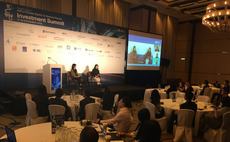
Capacity limits in AsiaPac?
A blast from the (recent) past blew in from the US last week, with the news that US investment group Fraser Sullivan had issued the first collateralized loan obligation (CLO) from a major financial house in over a year.
The leverage instrument of choice – though not in Asia – for the buyout boom that peaked in 2005-08, the CLO repackaged the leverage debt on LBO deals into tradable instruments sold on to instit...
Latest News
Asian GPs slow implementation of ESG policies - survey
Asia-based private equity firms are assigning more dedicated resources to environment, social, and governance (ESG) programmes, but policy changes have slowed in the past 12 months, in part due to concerns raised internally and by LPs, according to a...
Singapore fintech start-up LXA gets $10m seed round
New Enterprise Associates (NEA) has led a USD 10m seed round for Singapore’s LXA, a financial technology start-up launched by a former Asia senior executive at The Blackstone Group.
India's InCred announces $60m round, claims unicorn status
Indian non-bank lender InCred Financial Services said it has received INR 5bn (USD 60m) at a valuation of at least USD 1bn from unnamed investors including “a global private equity fund.”
Insight leads $50m round for Australia's Roller
Insight Partners has led a USD 50m round for Australia’s Roller, a venue management software provider specializing in family fun parks.





